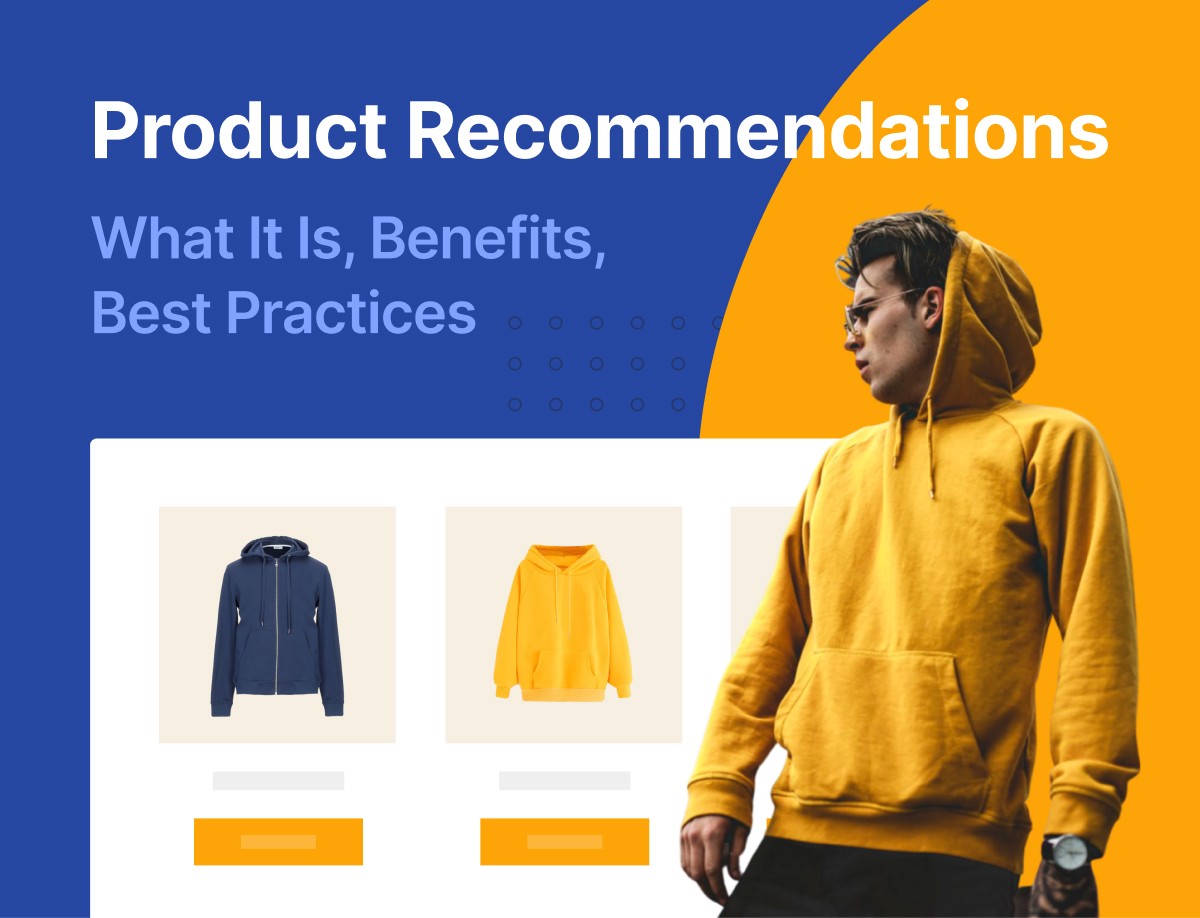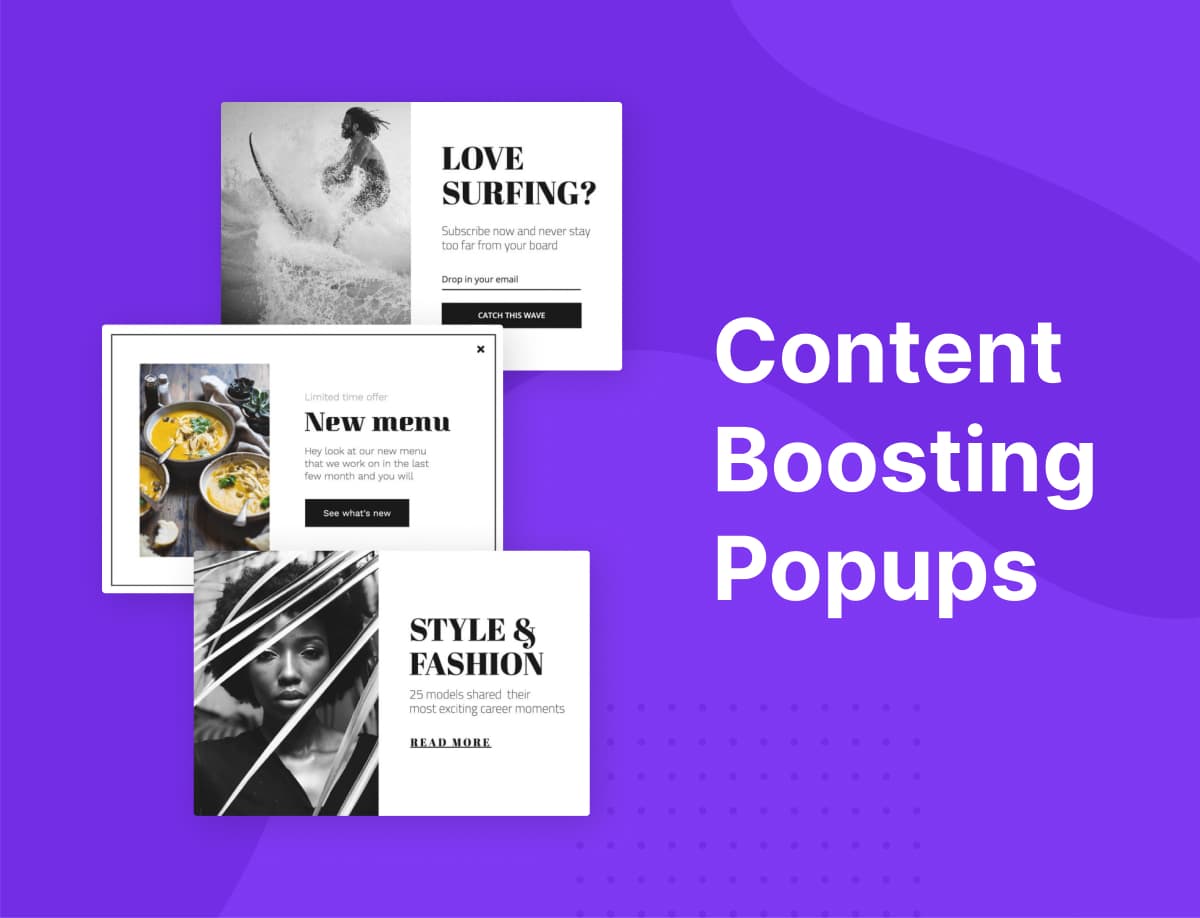Store owners, marketing managers, business development executives – personalized product recommendations is the future of selling online.
Personalizing your customers’ buying journey by recommending products they will find most relevant can help improve their shopping experience.
And a personalized shopping experience means you will spend less marketing dollars trying to persuade them to make a purchase.
On top of that, your chances of making good sales and driving higher revenue increase by multiple folds. We have statistics to back this up; we will get to them shortly.
Unfortunately, many businesses are unaware of this simple truth. Implementing product recommendations to their store is only an afterthought, that is if they ever think of it.
But you don’t have to be one of them!
In this post, we will be dissecting personalized product recommendations in its entirety.
Here are the salient points we will be covering:
- What is personalized product recommendations?
- How do product recommendation engines work?
- Types of product recommendations
- Benefits of implementing product recommendation to your online store
- Best practices with examples
- Move your business forward with Adoric’s recommendation algorithm
- Wrapping it up
So, if you are ready let’s get into it.
What is Personalized Product Recommendations?
A picture, they say, speaks a thousand words. Thus, we will be starting off with an illustrative example.
If you went over to Amazon and searched for, say, a Dell laptop, you would see something like this beneath the product you clicked.
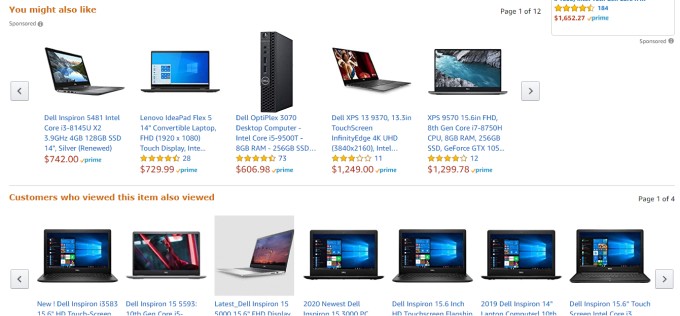

Basically, Amazon is saying:
- If you viewed this Dell laptop, you might also like this other set of products.
- Also, customers that viewed that Dell laptop also checked out these other products. You might as well like them.
This is product recommendations in action.
And by the way, Amazon has long mastered the art of personalized product recommendations. As a matter of fact, product recommendations account for 35% of the eCommerce giant’s sales.
Here’s another mind-boggling statistic: Netflix makes 75% of its sales from recommending movies and shows to its customers.
That’s grand!
Apparently, if you haven’t taken product recommendations seriously yet, you are leaving a lot of money on the table.
Personalized product recommendations don’t end at “what a customer might like” and “what other customers viewed”, like in the Amazon’s example you just saw.
You can make recommendations to customers based on:
- Best selling products
- Frequently bought together (complementary products)
- Trending products
- Featured products
- Most viewed products
Shortly, we will be discussing, in detail, the different approaches to product recommendations.
How Do Product Recommendation Engines Work?
Product recommendations engines are a set of algorithms that personalize your customers’ shopping experience by showing them products they will most likely be interested in.
They do this by checking an individual customer’s search queries, geographic location, products viewed, shopping history, and a host of others.
With this data, they will sort through your catalog to find the product that will match the customer’s preference most closely.
When a matching product is found, it would be presented to a customer directly on the website or via emails.
Recommendations engines are what make upselling and cross-selling possible. There are many other benefits they offer, but we will get to them in the later section of this post.
Types of Product Recommendations Filtering
To add layers of personalization to a customers shopping experience, recommendation algorithms often take 3 approaches:
- Collaborative filtering
- Content-based filtering
- Hybrid filtering
Collaborative Filtering
Visitors coming to your website can be segmented into two categories: first time and returning visitors.
Now, for the former, you can’t exactly tell what they might like. This is because they have no purchase history or preference data you can lay hold on to personalize their shopping experience.
As such, the best course of action is to go broad.
The algorithm engine could start by recommending a best-selling or trending products to a first-time visitor.
Then as the user interacts with your website by viewing available products, the algorithm engine begins to form a preference profile for such a user. Based on this profile, recommendations are made based on similar choices of other customers.
For example, let’s say a user viewed a particular laptop in your store. It would make sense to show the user related items other customers bought together with that laptop.
Take a look at how Amazon does theirs:
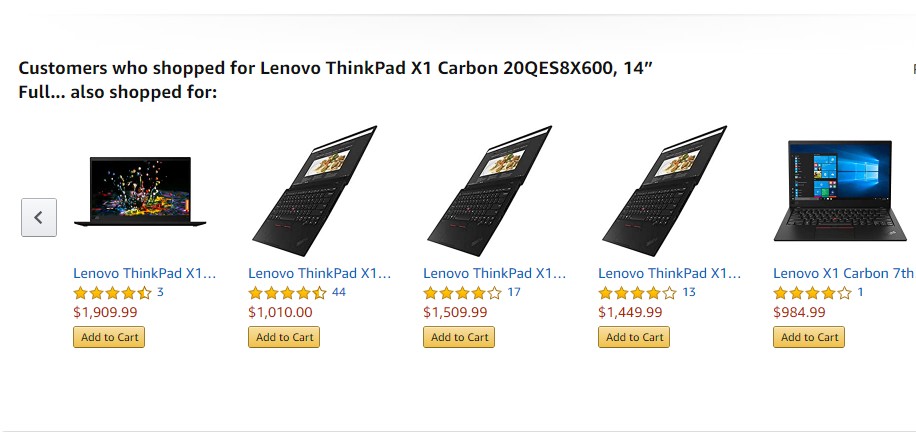

This is collaborative filtering in action. Of course, in practice, it’s a bit more complicated, but at least you have the basic idea.
One major drawback of this filtering system is that it is susceptible to inaccurate assumptions. That is, it can wrongly assume a user may like a product just because others liked it.
Content-based Filtering
Content-based filtering differs from collaborative filtering in that it makes user-specific recommendations, rather than making assumptions based on what others wanted.
What do we mean by this?
An illustration will come in handy here.
A returning customer to your site will have a preference profile built on any of the following data
- Purchase history
- Geographic location
- Age
- Social habit
- Browsing device
With this data, the AI engine would intelligently predict what that customer would likely want to purchase.
This adds a thicker layer of personalization to the user’s shopping experience.
Hybrid Recommendation System
As you might have guessed, hybrid recommendation is a mix of collaborative and content-based filtering systems.
Hybrid recommendation offers the highest level of accuracy and thus helps to greatly improve your site’s conversions.
But how exactly does it work?
In the previous examples we looked at, recommendations were made based on the similar choices of other customers, or a user’s preference profile.
But by combining both approaches, you are more likely to filter out products buyers will like.
So, in the end, you would be saying to a potential customer:
“Other customers who bought/viewed this item also bought this”
And
“Since you bought/viewed this product, you might also like this”
Here’s an inspiration from Lakeside.com
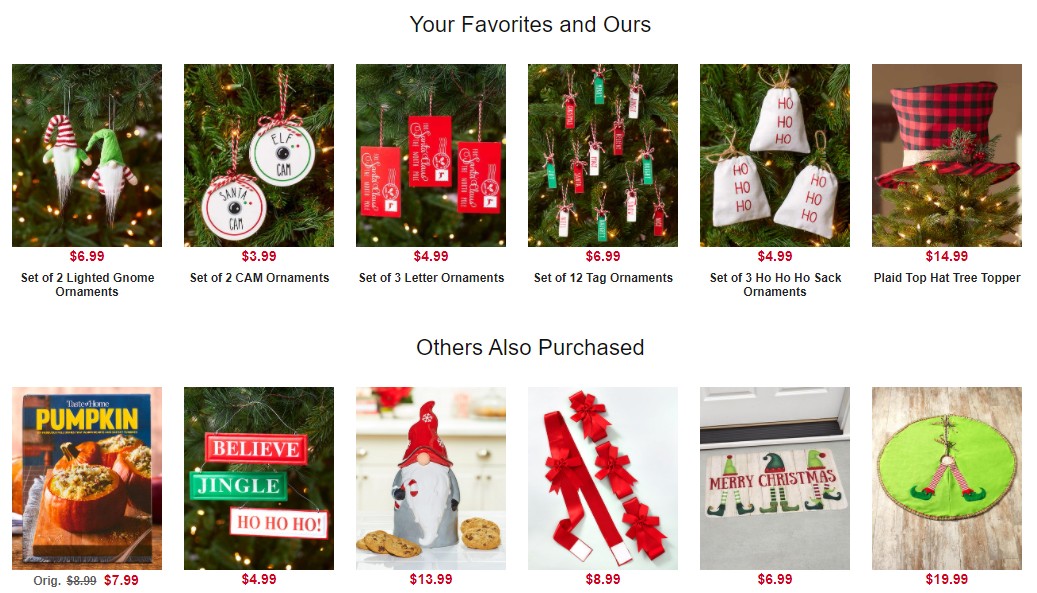

Of course, they merely played around with wording, but the idea is the same.
This is how Adoric’s recommendation engine works.
Benefits Recommendations Engines Have to Offer
Implementing personalized product recommendations on your website will cost you money.
It will cost you time, too. So, why bother?
The truth is that the benefits recommendation engines have to offer far outweigh whatever immediate cost they might bear.
Here are some of them:
- Improved Average Order Value (AOV)
- Better user engagement
- Higher conversions
- Reduces cart abandonment
- Optimized inventory
- Saves you time
Better User Engagement
Imagine you are on your favorite movie streaming website like, say, Netflix, trying to find a title you’d enjoy.
After what seems like endless hours of searching, you find nothing. You will very likely leave Netflix and go somewhere else, right?
The same holds true for e-commerce stores – if customers don’t find what they are looking for within the shortest possible time, they will likely take their money elsewhere.
You definitely don’t want that to happen.
Recommending personalized products to your visitors helps to keep them more engaged on your website.
And engaged visitors tend to stay longer on a website. The longer they stay, the lesser your bounce rate will be. The lesser your bounce rate is, the higher your website would rank on Google.
Higher Conversions
You want more prospective customers to sign up for your mailing list, don’t you? Well, there are several ways to go about this.
However, few are as effective as embedding a personalized product into your opt-in form.
When you eventually send subscribers your product catalog via email, they will most likely make a purchase.
Isn’t that the goal after all? To make more sales for your store?
Reduced Cart Abandonment
Every year, online merchants like you lose trillions of dollars to cart abandonment problems. As of 2016, a total of $4.6 trillion worth of merchandise were abandoned in shopping carts.
And, definitely, those figures are growing.
Long story short: cart abandonment is a pretty serious problem. But fear not, you can combat it with personalized product recommendations.
One tried-and-tested tactic is using exit-intent popups to show abandoning visitors products they will most likely be interested in, just when they motion to leave your website.
For maximum conversions, whatever product you recommend should be based on their browsing history and personal preferences.
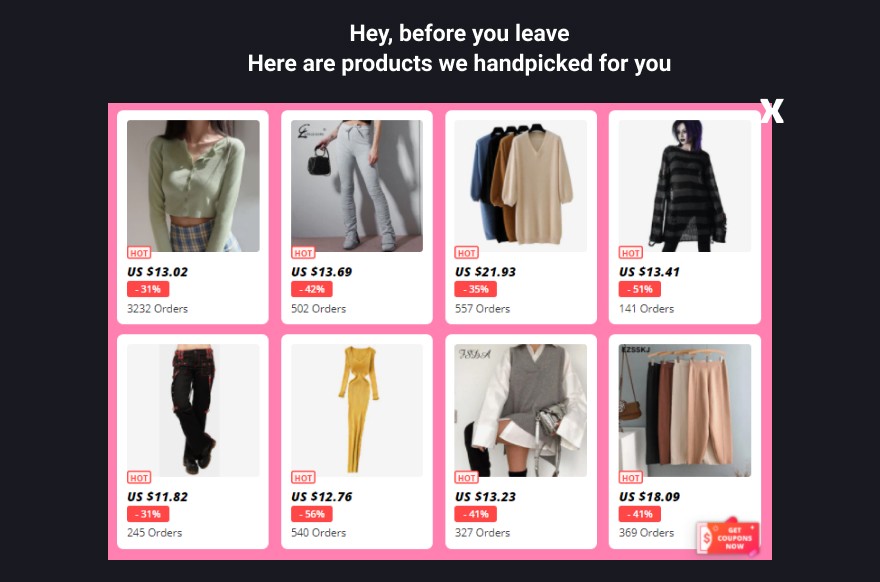

Alternatively, instead of showing recommended products, you can offer a discount, coupon, free shipping, etc. just to entice them to complete their carts. You could as well embed a personalized message that speaks to them.
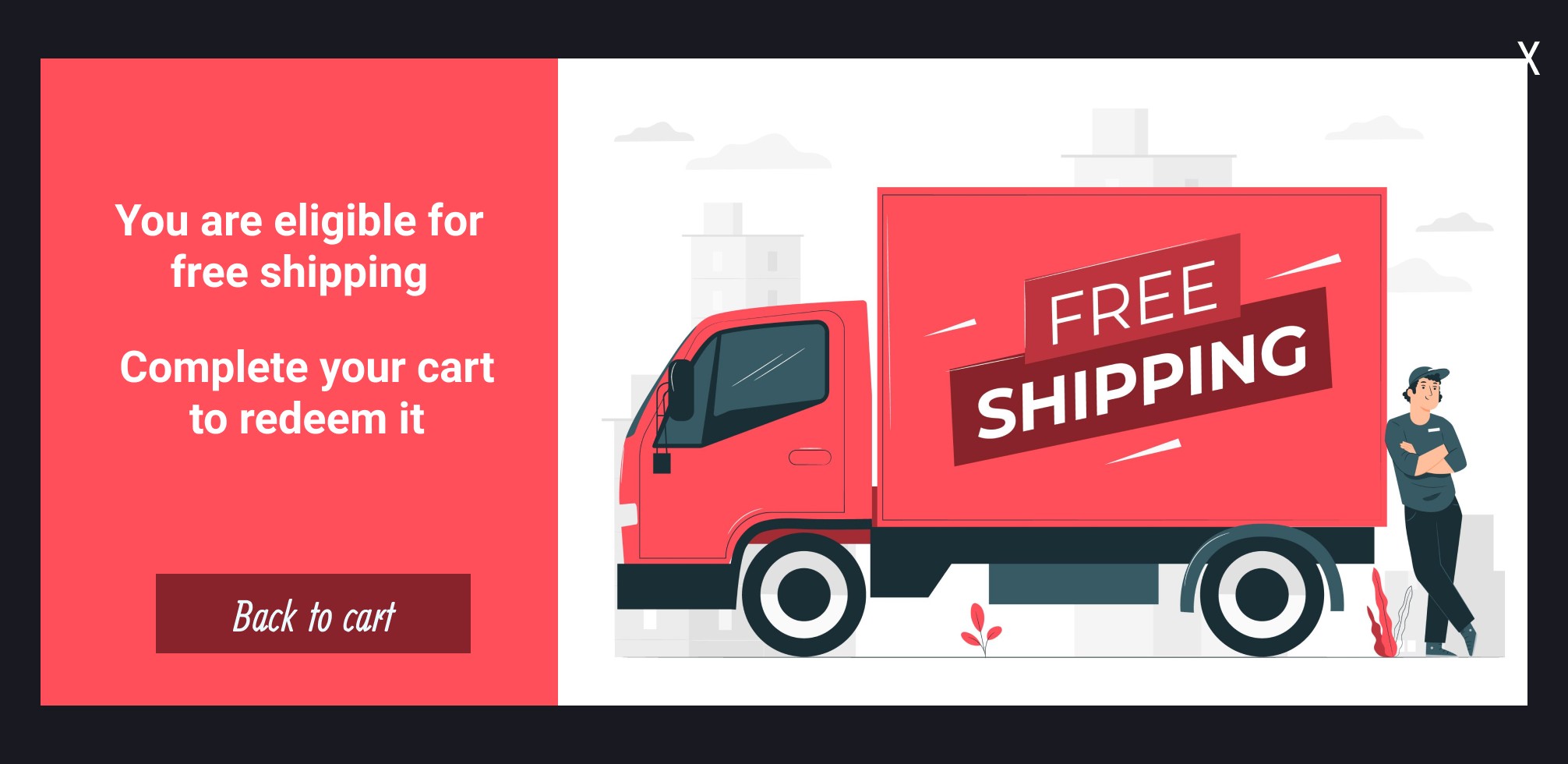

The possibilities are limitless – your imagination is only what limits you.
Optimize Your Inventory
To succeed in business, you have to offer customers what they actually want, and not what you think they might like.
This simple principle applies to all types of businesses, e-commerce included.
Offering your customers what they actually want helps you avoid stocking up products nobody is ever going to buy.
This is also where personalized product recommendation comes in handy. It gives you a comprehensive insight into what your customers are actually looking for. Then with this understanding, you can make a sound judgment as to which merchandise to stock up.
Saves You Time
One of the toughest, time-consuming tasks you can ever embark on as an entrepreneur is manually setting up your store for upsells, cross-sells, and product suggestions.
Even if you successfully undertake such a task, your customers might still find irrelevant product suggestions coming at them. As such, they won’t hesitate the slightest bit to leave your website.
Thankfully, eCommerce recommendation engines like Adoric can take away these troubles. All you have to do is set up your merchandising rules once, and our engine goes to work automatically creating personalized recommendations for your customers.
Hence, you have time to focus on what really matters: growing and efficiently managing your business.
Best Practices for Ecommerce Personalized Product Recommendations With Examples
It’s one thing to implement personalized product recommendations in your store, it’s yet another to do so properly.
Here are a few tips to make product recommendations work effectively for you.
- A/B test your strategies
- Incorporate recommendations across your pages
- Popups are your friend
- Put recommendations in emails
- Use social proofs
- Create a sense of urgency
- Don’t over do it
- Relevance is key
A/B Test Your Strategies
We will be going over some strategies you can use to get the most out of product recommendations. However, none is the silver bullet that guarantees maximum results.
What works for you today might not work tomorrow. And even if it did work, it might not as you expect.
For this reason, you have to keep tweaking, or, in this case, A/B testing your strategies.
Place recommendations on different pages on your website to see where they work best: home, product, checkout, and even categories pages.
Try out different combinations of complementary products to see which customers will respond more positively to.
A/B testing your ideas and strategies helps to retrain your engine, therefore making them highly adaptive.
Incorporate Recommendations Across Your Pages
If customers don’t get to see your recommendations, what point is it then? To see meaningful results from your web personalization efforts, the recommendations you make have to be highly visible.
This means placing them strategically across your web pages for customers to see.
So, where, ideally, should you incorporate recommendations?
1. Product Page
This is the best place to upsell and cross-sell a prospective customer. The reason is, any prospect on your product page still has his/her options open. As such, their buying decision isn’t set yet.
They are very much receptive to alternatives to what they have in mind.
This makes your product page one of the best places to weave in recommendations.
2. Home Page
A visitor that’s on your homepage scrolling down and up is probably wondering if you have what he’s looking for.
If you don’t capture their attention quickly by showing products that will likely match their interest, they might bolt.
That is why the home page is ideal for placing recommendations such as “best selling products”, “new arrivals”, “discounted products”, etc.
Then, as they start to interact with your products, the recommendation engine also starts to understand their preferences and, hence, make more personalized recommendations.
3. Cart Page
Remember when we talked about how recommendations can help increase your store’s average order value? The cart page is where it happens, actually.
It is the best place to recommend complementary and related products.
Let’s look to Beauty Bay, an online beauty product retailer, for inspiration. If you added an item to your bag and then went to the cart page, you would see something like this:
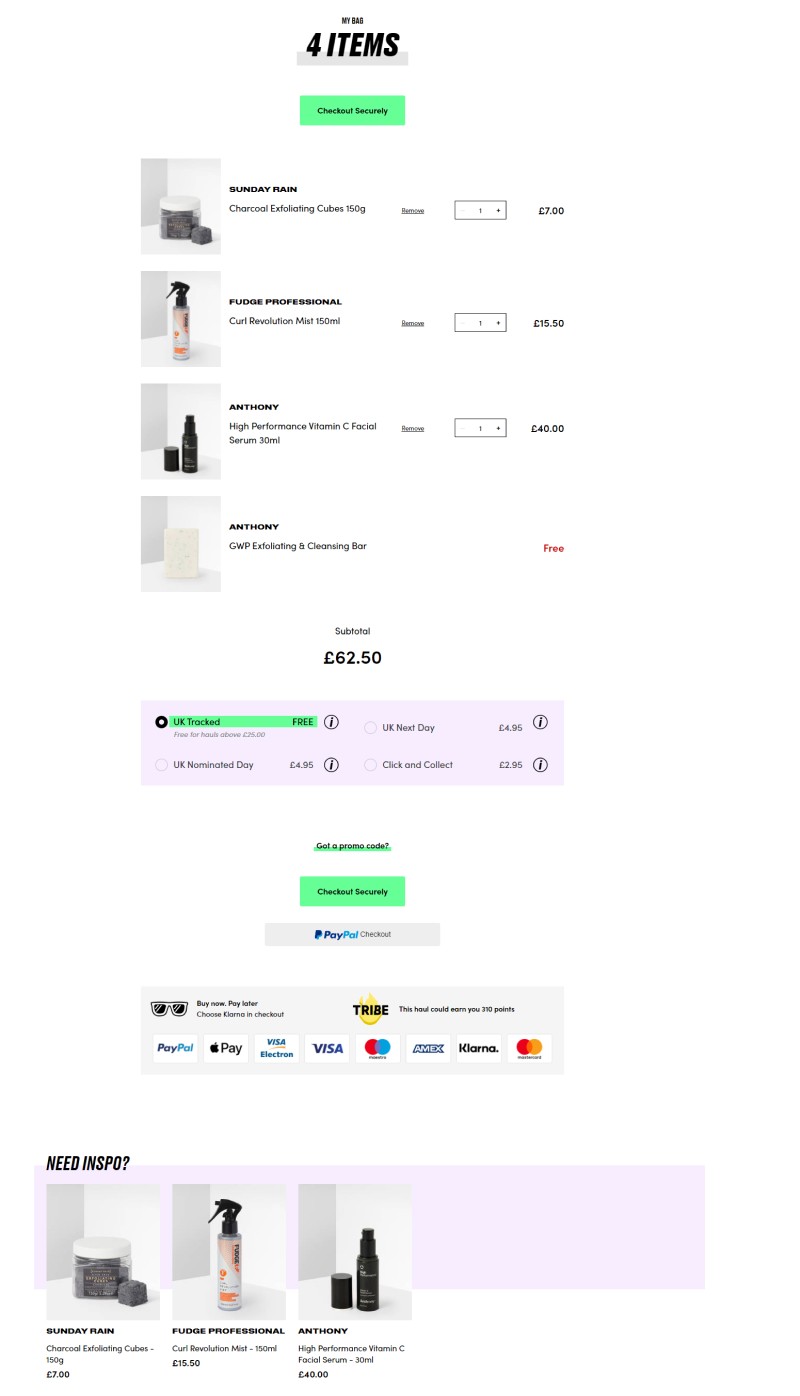

Notice the recommended products at the bottom?
4. 404 Error Page
404 error pages are non-existent pages you can’t afford to have around on your website. You know why? They are the biggest exit gateway from your site.
Nonetheless, you just can’t avoid having them for a myriad of reasons. But you don’t have to lose prospective customers that land on this page.
By placing recommended products relevant to what customers were viewing before arriving at this page, you lessen the chances of them leaving your website.
Popups Are Your Friend
Incorporating recommendations across your product pages is a good strategy, but, unfortunately, not dynamic enough. For best results, users need to see your recommendations without having to navigate across pages.
And there’s no tool that’s better suited for this job than a popup.
With popups, you can automatically show customers products closely related to the one they are currently viewing.
That way, they will get to see products they will most likely buy without having to move across pages on your website.
As an example, if you went to Amazon and added, say, a laptop to your cart, a popup with a list of possible items you might like would appear.


Put Recommendations in Emails
Email marketing is still the in-thing to this day despite the tons of marketing options modern-day technology offers. This makes it a perfect tool for upselling and cross-selling via personalized recommendation, and also for recovery of abandoned carts.
As a matter of fact, embedding recommendations into your marketing emails can shoot your click-through rate up to 300%.
So, if you aren’t exploring email marketing fully yet, it’s about time you did. You can start by sending out emails with a list of trending products to your subscribers.
Looking for inspiration? Here’s how Tarte, an online cosmetic shop, went about theirs.
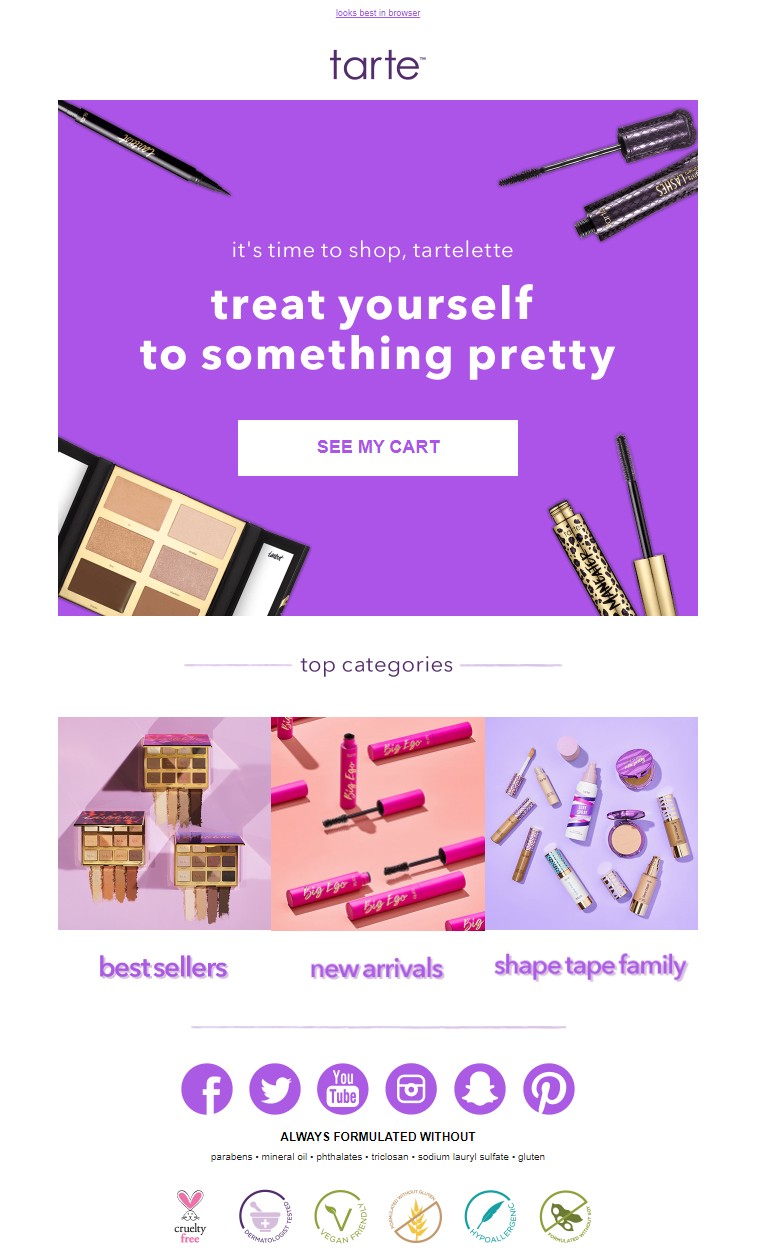

This type of email works best for new visitors who have limited browsing or purchasing history.
Another tactic you can use is sending out reminder emails to customers who left your site without completing their purchases. Just wrap the email together with the items they abandoned in the cart.
Here’s an abandoned cart recovery email from BeautyBay you can take a cue from.
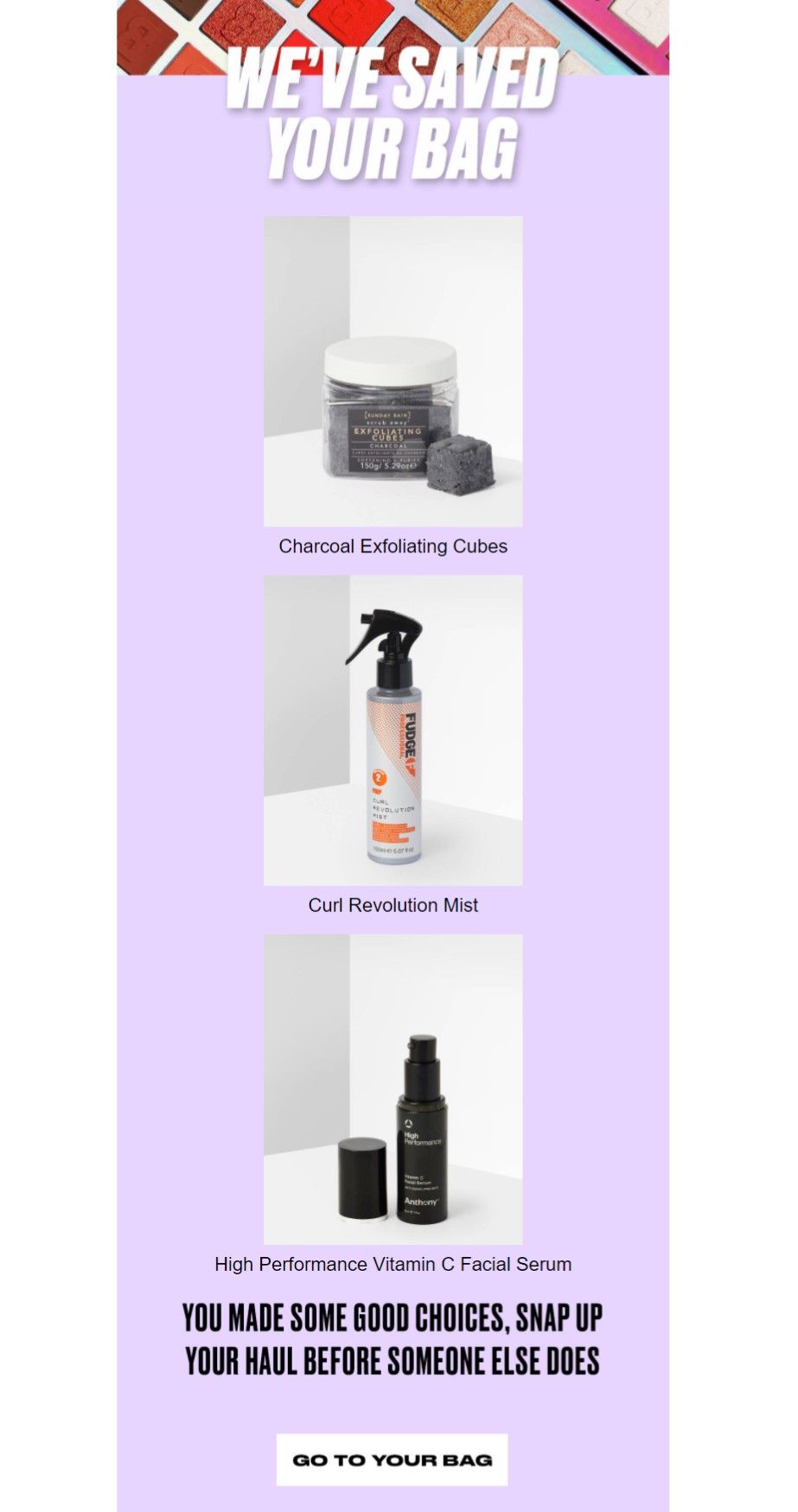

Use Social Proofs
Adding social proofs to your website can help boost conversions in more ways than you can imagine. Statistically speaking, a product with five reviews is 27 times more likely to sell than one with no review. Incredible, isn’t it?
This is why sprucing up your recommendations with social proofs is very important.
One easy way to go about this is by adding a badge that displays the number of times an item has been bought.
Alternatively, you could show the number of reviews previous buyers left of the product, just the way Bliss did.


Create a Sense of Urgency
The whole essence of product recommendation is getting users to make purchases right away and not at a later time. By then, they would have forgotten about your store completely.
Creating a sense of urgency is one bankable strategy you can use for this purpose. It allows you to take maximum advantage of people’s instinctive, natural fear of missing out on something.
Need inspiration? Just tell prospective customers a product they are interested in might become unavailable if they don’t act fast. You can learn from Secretsales.com.
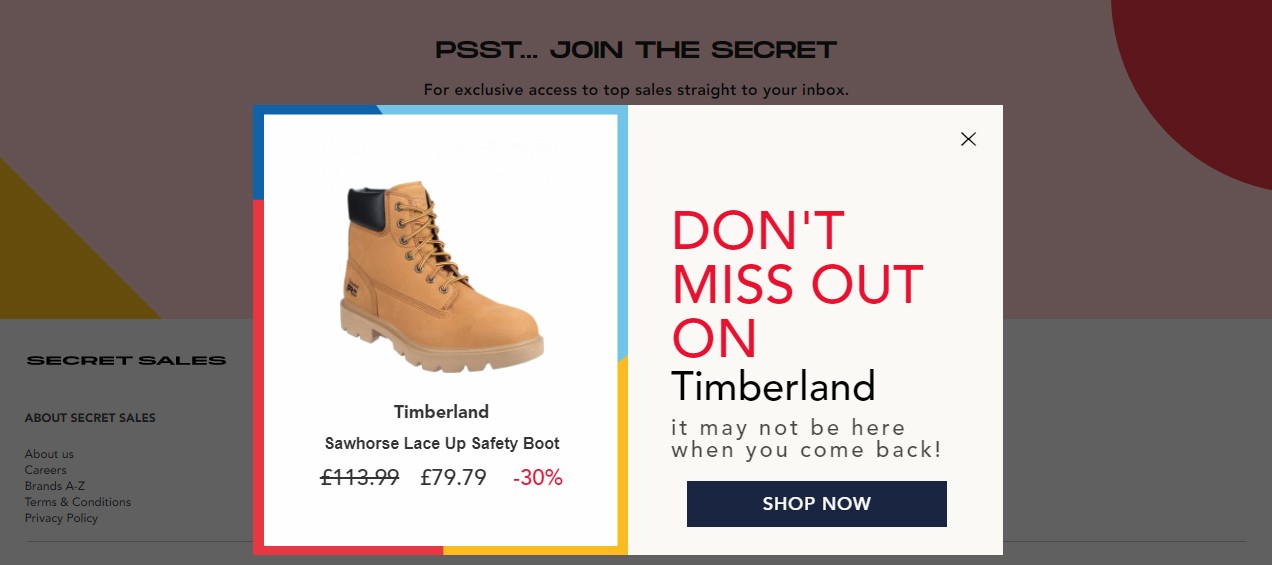

Creating a sense of urgency with your customers has an additional benefit: it makes them buy your products out of impulse.
This translates to more sales and increased revenue for your business.
Don’t Over Do It
It can be tempting to place recommendations at every nook and cranny of your website. While this approach isn’t bad, per se, you risk annoying users and sending them – possibly forever – away from your site.
The key is to go easy with the recommendations – you don’t have to slap them all over the pages and sections of your website.
Tactfully place a few of them on pages you believe they will receive maximum viewership.
If you use popups to promote products, show them sparingly.
The takeaway here is: don’t over do it.
Relevance Is Key
If your algorithm engine isn’t smart enough to recommend relevant products, you are already shooting yourself in the leg.
Relevance is the epicenter of every product recommendation endeavor.
Imagine a potential customer is viewing a discounted sneaker on your website. Then all of a sudden, a popup fires up and displays, say, a heavily-priced video game as a recommendation. Such a user might instantly take off out of annoyance.
You sure don’t want that to happen, right?
Of course, you don’t! Therefore, you have to keep retraining your algorithm engine to think smartly. Even Netflix and Amazon do the same.
Move Your Business Forward With Adoric’s Recommendation Engine
We’ve covered in detail the working principle and benefits of implementing a recommendation system to your e-commerce site.
Now, it’s time to take action. Deploy Adoric’s recommendation engine to your online store, and see how your sales will soar high.
Curious to know more? With Adoric, you can:
- Add recommendations to your home, product, cart, and any other page you wish, without hassles. This helps to increase your product’s visibility.
- Import your product catalog and connect to your Google Analytics account seamlessly. As users start to interact with your products, our algorithm starts to build a preference profile for each user. It then proceeds to filter out products from your catalog that best match each user’s preference.
- Implement recommendation strategies such as “best sellers”, “most viewed”, “bought together”, etc.
- Target the right audience.
- Allow your customers to filter out products based on price, category, etc.
Wrapping It Up
Implementing personalized product recommendations to your store will set you miles apart from competitors.
It will bring you more sales than you ever wanted.
Get started today with Adoric by signing up for a free account, and experience, first-hand, the true power of personalized product recommendation.

